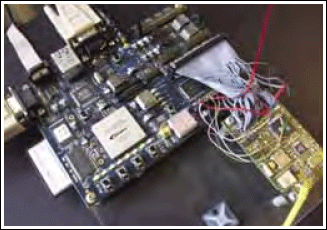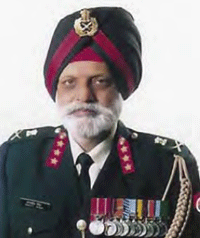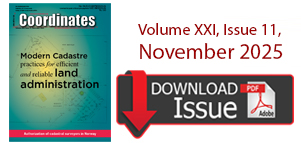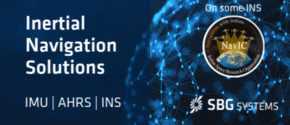Articles in the Articles Category

Says Dr Irwin Itzkovitch, Assistant Deputy Minister,Earth Sciences Sector, Natural Resources Canada
while discussing various aspects of Indo-Canada relationship in the field of Geomatics.Natural Resources Canada (NRCan) helps shape the important contribution
of Canada’s natural resources sector to our economy, society and
environment. The segments on which NRCan focuses are forestry,
energy, minerals and metals, and Earth sciences, including geomatics,
geoscience and related industries. Canada’s natural resources industries
are high-tech, innovative and growing.
February 2006
International GIS Conference & Exhibition
13-15 February, Kuwait
http://www.gulfgis.com/
The interface
Seventy per cent of India lives in villages.
And villages mean not ‘big’ problems but very ‘basic’ problems.
Where the question is to fulfi ll the basic needs such as food and shelter.
Where access to clean water, education and health facilities itself is an issue.
Where there is a struggle for survival on a daily basis.

As the GPS surveying techniques started showing promise of high accuracy geodetic positioning in the early 1990s, few “open-minded” geodesists realized the possibility of using ellipsoidal heights in place of orthometric heights. Many conceptual approaches were mentioned and proposed in various applications. However, Steinberg and Papo were the fi rst to publish a paper entitled “Ellipsoidal Heights: The Future of Vertical Geodetic Control” (GPS World, Vol. 9, No. 2, 1998). As could be expected, Petr Vanicek, a geodesy professor, was quick to downplay the proposed new “type” of vertical control (GPS World, Vol. 9, No. 4, 1998). It seems that Steinberg and Papo did not “defend” their new proposal. Thus, in this paper, a review has been made to check and comment on Vanicek’s example against the ellipsoidal heights, reference to orthometric islands, and issuance of a warning for non-dissemination of ellipsoidal heights to Canadian users.

In early 2004 a plan was hatched to develop a Global Navigation Satellite System (GNSS) receiver based around Field Programmable Gate Array (FPGA) technology as a platform to support research in this fi eld. A joint project was set up between the School of Surveying and Spatial Information Systems (SISS) at the University of New South Wales and the National ICT Australia (NICTA), and soon after a small team was established. The team consisted of Kevin Parkinson, a post-graduate student at SISS with experience in FPGA and circuit board design, Frank Engel, a researcher with NICTA with software, Real Time Operating Systems (RTOS) and VHDL design knowledge and me, Peter Mumford from the SISS GNSS research group. At the end of the project we hoped to have an L1 GPS receiver running on a custom circuit board with the baseband processor and navigation solution processor running on an FPGA chip. The project is coming to an end now, and in this article, I will describe our design path, what has been achieved to date and then some potential research areas, but fi rst a little background.












 (5.00 out of 5)
(5.00 out of 5)